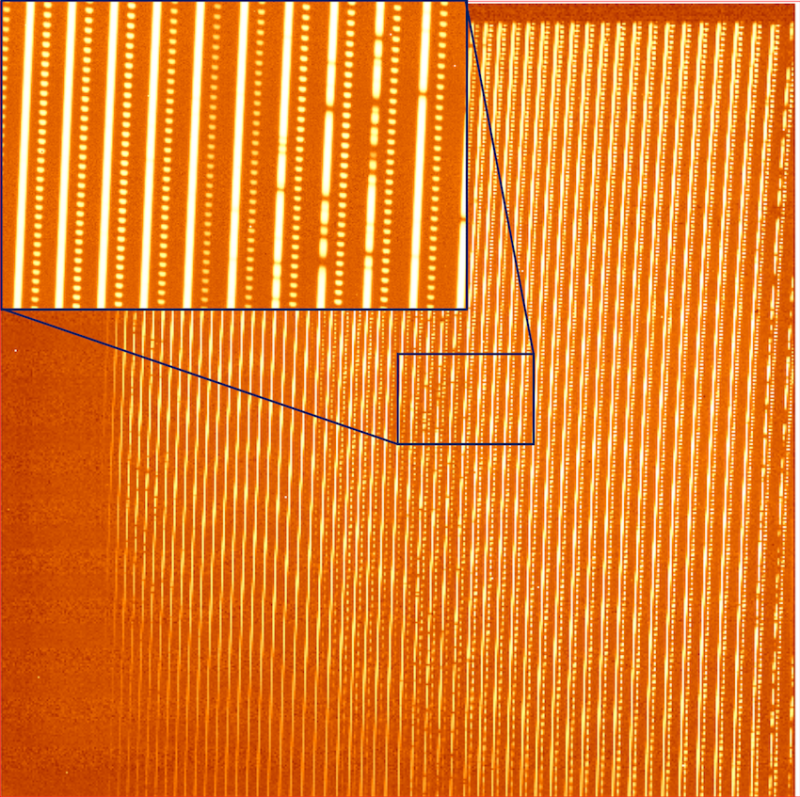We’re excited to announce that we have partnered with Future Grind to produce the Rejuvenation Roundup Podcast, hosted by Ryan O’Shea! Explore the latest in life extension and anti-aging science with a dive into a month’s worth of scientific insights and new breakthroughs. More at lifespan.io/roundup
Category: innovation – Page 222

Is Bitcoin Erasing 300 years of Monetary Evolution?
 Today, economist and Nobel laureate, Paul Krugman, wrote in the New York Times, that Bitcoin is taking us back 300 years in monetary evolution. As a result, he predicts all sorts of bad things.
Today, economist and Nobel laureate, Paul Krugman, wrote in the New York Times, that Bitcoin is taking us back 300 years in monetary evolution. As a result, he predicts all sorts of bad things.
A significant basis for Mr. Krugman’s argument is that the US dollar has value because men with guns say it does.
Is Bitcoin erasing 300 years of monetary evolution?
Running with the metaphor that fundamental change to an economic mechanism represents ‘evolution’, I think a more accurate statement is that Bitcoin is not erasing the lessons of history. Rather, it is the current step in the evolution of money. Of course, with living species, evolution is a gradual process based on natural selection and adaptation. With Bitcoin, change is coming up in the rear view mirror at lightning speed.
The Evolution of Money
When a medium of exchange is portable, fungible, divisible, unforgeable and widely accepted, it becomes money. For at least six millennia, barter was gradually replaced by various mediums of exchange.
- Obsidian —» Cowry shells —» Gold —» Promissory notes (backed by a Bank, employer or wealthy industry) —» Fiat (national currency)
But what backs these forms of money? What gives them value?
The first 3 currencies above were accepted as money on 5 continents. They were backed by their scarcity and unique characteristic properties (Aristotle called this intrinsic value). But even gold cannot serve as a widely used currency today. Although it is portable and scarce, it is not easily tested or subdivided in the field; it is risky to transport and difficult to track; and it is not suited to instant electronic settlement. But what about Fiat money. What backs it?
What Backs National Currencies?
Fiat has been backed by various different things throughout history. They are all compromised attempts to establish confidence and trust. They are compromised, because the fall short of one or more facets of trust.
In the list below, monetary backings in Red are what Mr. Krugman calls “men with guns”. That is, he claims that government demands give value to the dollar:
- Value tied to gold —» Promise of redemption —» Legal tender (public must accept it for all debts) —» settlement of taxes —» The “good faith and credit” of workers
Unfortunately, the transition away from a trustworthy basis and the constant temptation of kings, dictators and politicians to print money based on credit (or nothing at all—as in the case of our fractional reserve system), has created a house of cards that few people believe is sustainable.
Bitcoin changes all this.
Finally, a crowd-sourced trust basis was invented (or discovered). It is unhackable, un-inflatable, unforgeable and immutable. Most important, it allows a government to be decoupled from its own monetary policy and supply. This is a remarkably good thing for businesses, consumers, creditors, trading partners—and especially for governments.
And Bitcoin is backed by something better than guns, gold or promises. It is provably scarce, capped in supply, completely fair, and built on a massive, crowd-sourced network of bookkeepers and auditors. It is the first currency—and quite probably the last—built on genius math and indisputable trust.
Despite the gross misunderstandings and misconceptions of early pundits, it does not interfere with a government’s ability to tax, to spend or to enforce tax collection—and it does not facilitate crime.
Bitcoin is new, but the goal of distributing trust is not as radical as you might think. It addresses a problem that economists and mathematicians have pondered since Aristotle and the ancient Greeks…
Background
Ever since the transition from real gold to government notes, bank notes and bank ledgers—economists have wondered if value can arise from a public trust that is durable, distributed and stateless. Until 2009, the answer seemed to be that this was impossible because of the double-spend problem.
But 9 years ago, something changed; and the change is dramatic. It will take an additional decade for most people to understand and appreciate this change…
In the first paragraph, I cited Mr. Krugman’s statement that the US Dollar has value because of “men with guns” (a reference to the fact that its use is legally compelled for payment of any debt and for government taxes). But this is not what gives it value. The dollar, the Euro, a Picasso painting and a fresh serving of hot french fries all derive their value from supply and demand. Bitcoin is no different. The trick is to generate viral demand and a ubiquitous infrastructure needed to achieve a robust two-sided network.
In the white paper that introduced both blockchain and Bitcoin (the first blockchain application), Satoshi taught us that a widespread and easy to access communications network (the internet and universal access to smartphones) can give rise to value that is based on a different type of trust. Instead of trust in a government, a bank, or testing the chemistry of a precious metal, value can arise from trust in a formula that is ubiquitous, redundant and constantly monitored and vetted.
All of these things have a value based on demand and the available supply. But with Bitcoin, the medium of exchange (and additionally the store and transfer of value), can be achieved by math, distributed trust and a pure, two-sided network.
So, is Bitcoin taking us backward in time, utility, safety and governance? I have never been awarded a Nobel Prize—but it seems pretty clear to me that Bitcoin is taking us forward and not backward.
Philip Raymond co-chairs CRYPSA, hosts the New York Bitcoin Event and is keynote speaker at Cryptocurrency Conferences. He sits on the New Money Systems board of Lifeboat Foundation. Book a presentation or consulting engagement.
DARPA pushes for AI that can explain its decisions
Companies like to flaunt their use of artificial intelligence to the point where it’s virtually meaningless, but the truth is that AI as we know it is still quite dumb. While it can generate useful results, it can’t explain why it produced those results in meaningful terms, or adapt to ever-evolving situations. DARPA thinks it can move AI forward, though. It’s launching an Artificial Intelligence Exploration program that will invest in new AI concepts, including “third wave” AI with contextual adaptation and an ability to explain its decisions in ways that make sense. If it identified a cat, for instance, it could explain that it detected fur, paws and whiskers in a familiar cat shape.
Importantly, DARPA also hopes to step up the pace. It’s promising “streamlined” processes that will lead to projects starting three months after a funding opportunity shows up, with feasibility becoming clear about 18 months after a team wins its contract. You might not have to wait several years or more just to witness an AI breakthrough.
The industry isn’t beholden to DARPA’s schedule, of course. It’s entirely possible that companies will develop third wave AI as quickly on their own terms. This program could light a fire under those companies, mind you. And if nothing else, it suggests that AI pioneers are ready to move beyond today’s ‘basic’ machine learning and closer to AI that actually thinks instead of merely churning out data.
Special tattoo technique covers up scars and stretch marks
This innovative new technique makes tattoos more than just decoration 💉.

Science Fiction Cities: How our future visions influence the cities we build
For over a century science fiction filmmaking has presented us with depictions of our future cities. Some have been bright, shiny and positive, while others have been dark, dirty and rough. As we look forward to a 21st century filled with massive mega-cities, and extraordinary technological innovation, we must ask how are our science fiction visions influencing the cities we build, and what can we learn from some of these prescient fictional texts?

Uc Berkeley Aging Research And Technology Innovation Summit
August 17th sees our friends at UC Berkeley hosting an aging research summit which is shaping up to be pretty interesting.
Please join us for a day of speakers, awards, poster sessions, and valuable networking focused on cutting-edge aging research and technologies. Our aim is no less than to reimagine aging and elder care. A percentage of the proceeds from this event will support scholarships for students interested in research on aging & elder care…



The tools – and weapons – China can use for tech supremacy
Two weeks ago Abacus examined the extent to which China lags behind the world’s advanced economies in technological innovation, and looked at Beijing’s aim of closing the gap and taking the lead in key emerging technologies.
Some techniques Beijing will use are similar to past episodes of industrial planning. Others are newer, reflecting China’s recently acquired economic strength and confidence.
By Tom Holland
